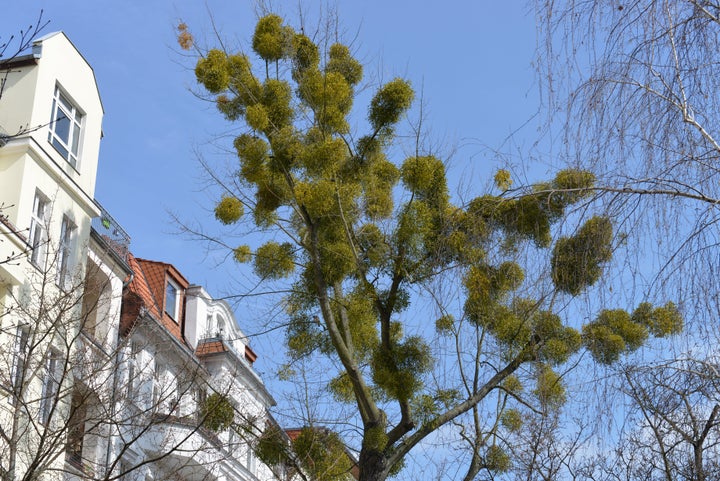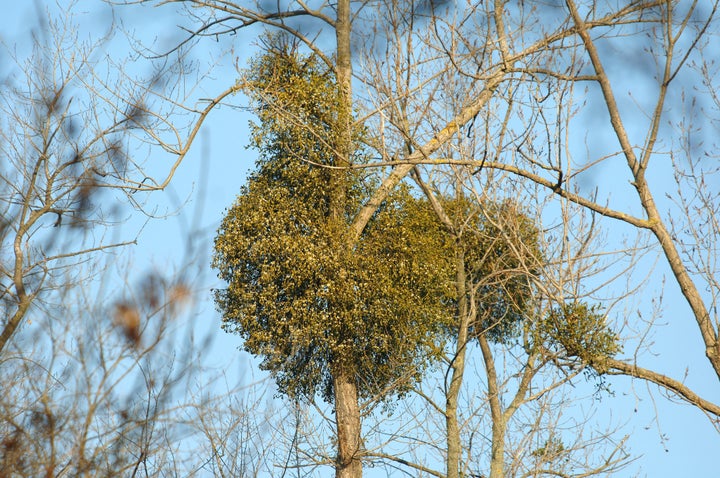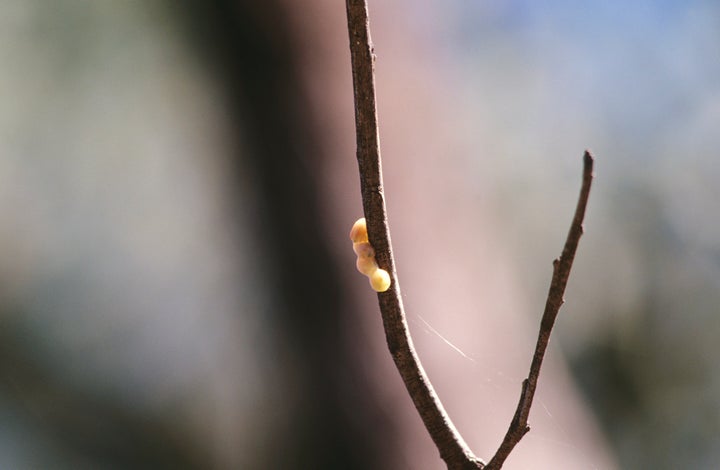
Mistletoe is an essential decoration at any adorable holiday party. But if you knew about mistletoe’s true origins, you’d be less than tickled by its presence. Trust us.
Mistletoe is a semiparasitic plant that attaches to trees and sucks out their water and nutrients. Trees afflicted with mistletoe die prematurely, thanks to these giant parasitic balls that grab onto branches and weigh up to 50 pounds, according to the National Wildlife Federation. Mistletoe berries are poisonous to humans and many animals. In short, this plant is anything but romantic IRL:


You’ll never guess where mistletoe got its name.
Mistletoe is the general name for some 1,300 species of plants that grow all over the world, from the Amazon to the California desert. We don’t know for sure, but one theory goes that the name comes from the German words mist, or “dung,” and tang, or “bark,” because many species of mistletoe rely on bird poo to spread their seeds. As Scientific American explains:
The seeds are large and extremely sticky, coated in a sugary molecule called viscin. The seeds can either get stuck to the birds’ beaks, who then rub them against tree bark to get them off, or can be digested and pooped out onto trees, still sticky after their transit through the bird’s digestive system.
But of course, feces isn’t the only way mistletoe spreads from tree to tree. Dwarf mistletoes use fluid pressure to singlehandedly shoot their seeds into the world at speeds of nearly 50 miles per hour, according to Encyclopedia Britannica. Sinister.

And here’s the strange reason we kiss under it.
Mistletoe’s reputation for romance likely comes from a Nordic myth in which the goddess of love tries to prevent her son’s death by begging every plant and animal not to harm him. Unfortunately, she forgets to ask mistletoe, and the plant leads to her son’s demise. Some versions of this legend say the son is ultimately resurrected, and others say he isn’t. In any case, the goddess deems mistletoe a symbol of love for all time and promises a kiss to anyone who passes beneath it. The Brits took this mainstream in the 18th or 19th century, when they started kissing under mistletoe at Christmas parties.

OK, so mistletoe isn’t totally terrible.
Many ancient cultures considered the plant to be a healing agent for ailments like menstrual cramps, epilepsy and ulcers, History notes. Suzanne Somers used drugs with mistletoe extract to treat her cancer in the early 2000s, even though its effectiveness as a cancer medication is not proven, according to the National Cancer Institute.
Mistletoe isn’t a total demon in nature, either. While it steals water and food from trees, mistletoe can also make some of its own food thanks to chlorophyll. It also provides homes for birds, squirrels and butterflies.
Wanna harvest your own?
The U.S. government actually provides instructions on how to cut your own mistletoe out of trees. You’ll need to find an afflicted tree and bring along some sheers or maybe a pruning pole. If you’re like some mistletoe pros, you can even leave a thank-you gift to the tree.
Happy parasitic holidays!
